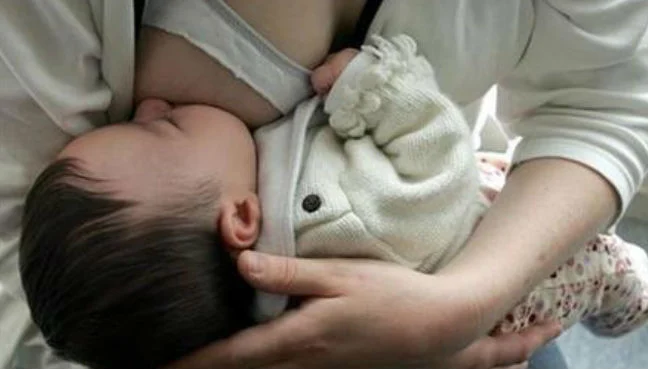Some mothers can't breast-feed.

After struggling to breast-feed her first two children, Nyssa Retter was determined to do better with her third.
She gave birth without painkillers, which may make newborns slightly drowsy. She chose a free-standing birth center staffed with lactation-savvy midwives. She had skin-to-skin contact with her daughter immediately after birth and consulted with midwives when her daughter cried and screamed between near-constant feedings.
But at the baby's two-week weigh-in, Retter learned that, despite all her efforts, her daughter was still below her birth weight and would need formula supplementation.
It was only then that Retter verbally cornered a lactation consultant and finally received a diagnosis.
"I have IGT, don't I?" said Retter, who had read online about insufficient glandular tissue, a breast condition strongly associated with the inability to produce enough milk for a baby.
"Yes," said the lactation consultant. "I think you do."
In an era when "breast is best" is trumpeted by the government, by the medical profession and even by baby formula companies, an estimated 1 to 5 percent of women are physically unable to produce enough milk to feed their babies.
These women are often ignored by doctors, given the brushoff by old-school lactation consultants, and essentially left to fend for themselves.
Women often see multiple health professionals without getting even a diagnosis, much less comprehensive care, says Retter, a co-administrator of the 1,300-member IGT and Low Milk Supply Support Group on Facebook.
"I would love for every obstetrician to actively acknowledge this and work with mothers to do everything they can to maximize their milk supply," Retter says. "I would just love for people to even know that it exists, just to acknowledge us. Just to know that we're here and help take care of us and support us."
It's a measure of how little attention chronic, primary or "true" low milk supply has received, that no one knows for sure how many women are affected.
"You cannot find a number for this," says Marianne Neifert, a clinical professor of pediatrics at the University of Colorado Denver School of Medicine who co-authored a 1990 study of 319 breast-feeding women that found 15 percent of the women were unable to produce sufficient milk by three weeks postpartum.
Neifert attributes most of the low supply to problems such as sore nipples and infant feeding difficulties, but she says 4 percent of the 319 women appeared to have chronic low milk supply.
Today, experts say that 1 to 5 percent of Western women are affected, Neifert says, but she hasn't been able to find any additional studies that support those numbers.
Let’s Glow
Glow is here for you on your path to pregnancy
Glow helps you navigate your fertility journey with smart tools, personalized insights, and guidance from medical experts who understand what matters most.
25+ million
Users
4.8 stars
200k+ app ratings
20+
Medical advisors



